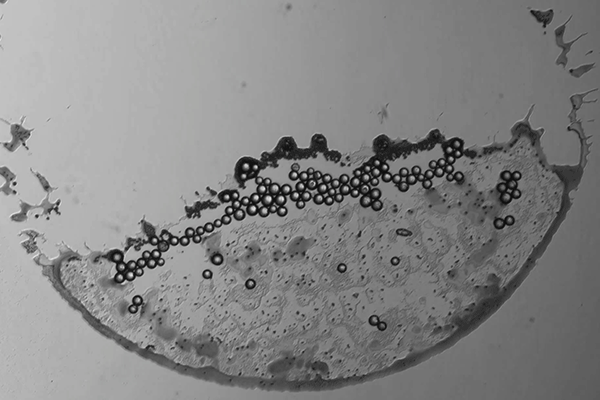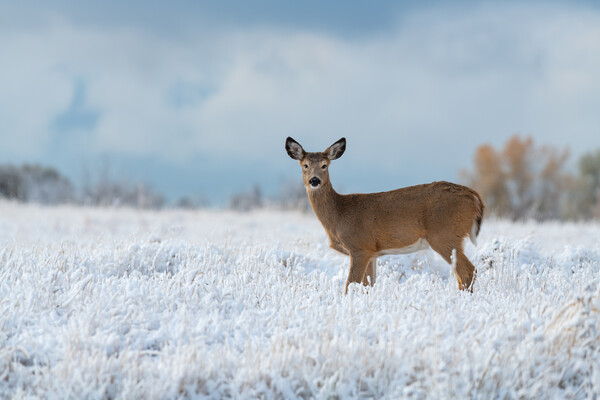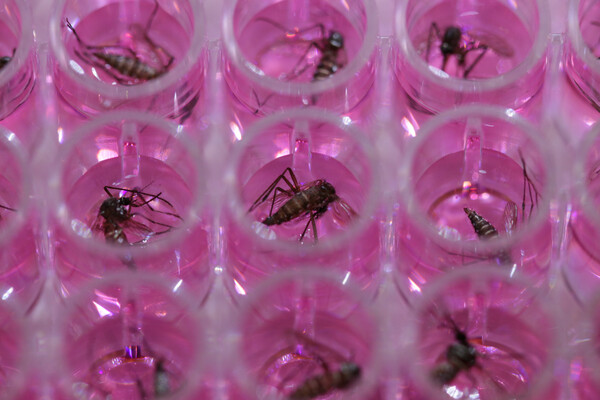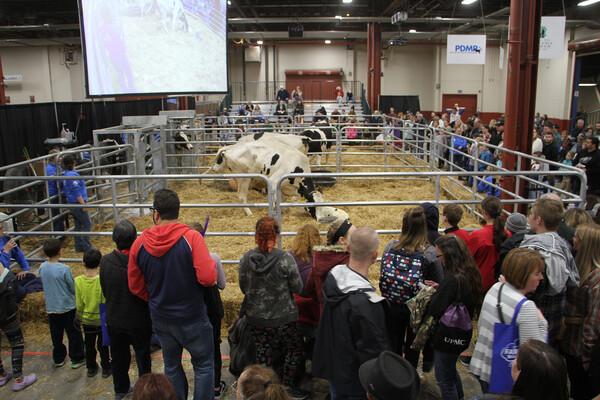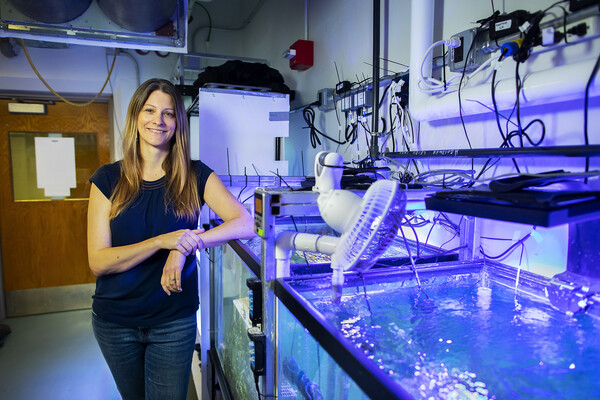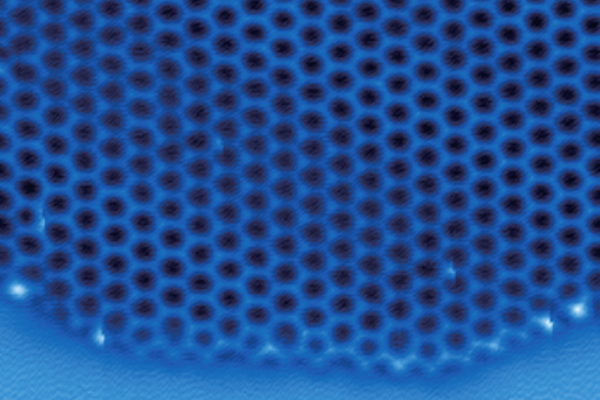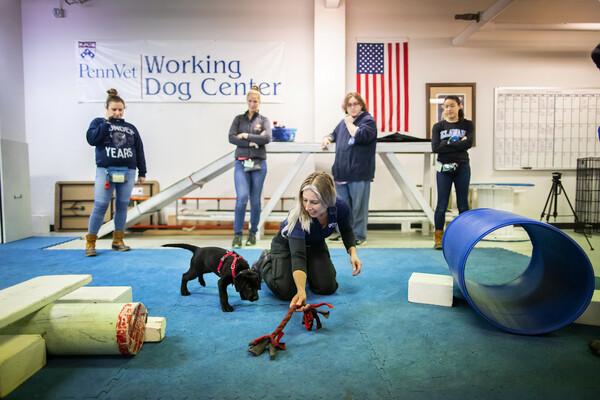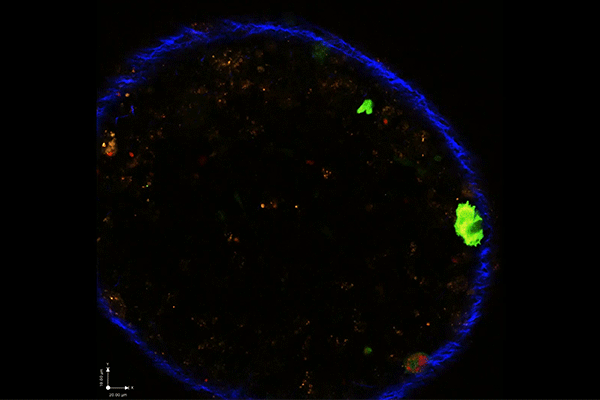
The Toxoplasma parasite (in red) doesn’t need to infect an immune cell to alter its behavior, according to new Penn Vet research. Simply being injected with a package of proteins by the parasite (indicated by cells turning green) is enough to change the host cells’ activity. (Video: Courtesy of Hunter laboratory)
